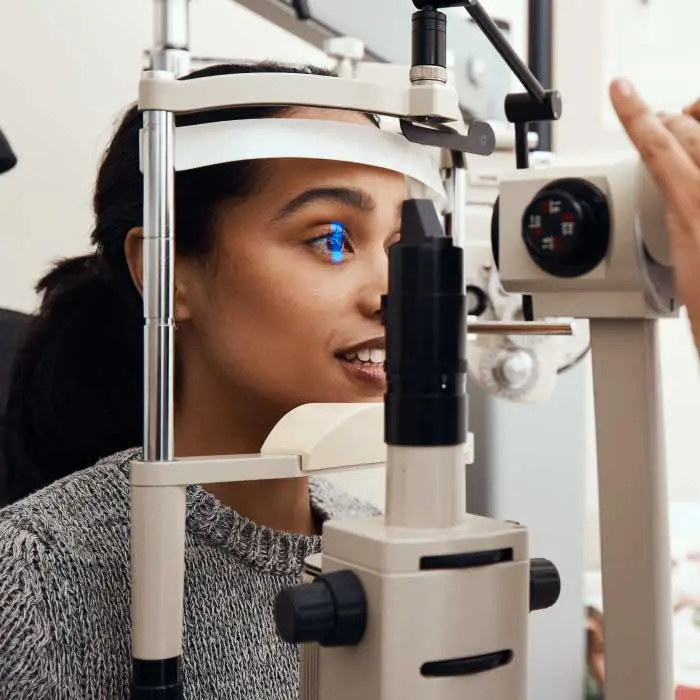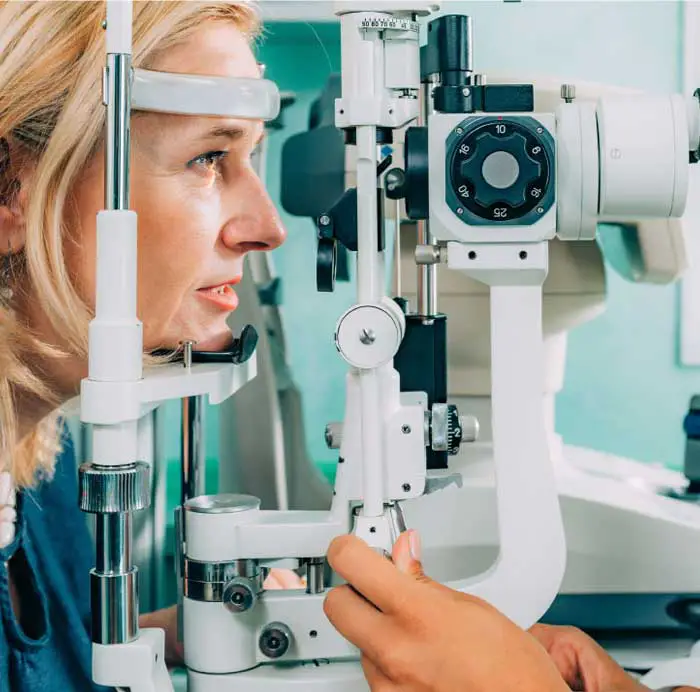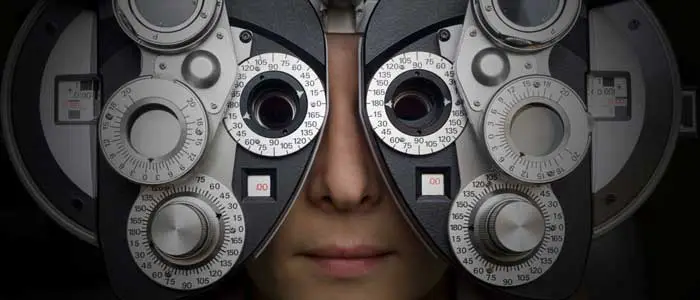Ocular Albinism - Symptoms, Causes and Treatment
07-04-2024
What is Ocular Albinism?
Ocular albinism is a genetic condition that primarily affects the eyes, causing a lack of pigment in the iris, retina, and other areas of the eye. This results in various vision problems such as decreased visual acuity, nystagmus (involuntary eye movements), and sensitivity to light. Ocular albinism can also affect the development of the optic nerve and lead to other eye abnormalities. People with ocular albinism often have light-colored eyes and may experience difficulty with depth perception and visual clarity. Proper diagnosis and management by an eye care professional are important for individuals with ocular albinism to help optimize their vision and overall eye health.What Are The Causes Of Ocular Albinism?
Ocular Albinism is caused by a genetic mutation that affects the production of melanin in the eyes. Melanin is a pigment that gives color to the skin, hair, and eyes, and it also plays a crucial role in the development of the visual system. In individuals with Ocular Albinism, the cells responsible for producing melanin do not function properly, leading to reduced pigmentation in the eyes and affecting the development of the retina and optic nerve. This can result in various vision problems, such as reduced visual acuity, nystagmus, and sensitivity to light.What Are The Risk Factors For Ocular Albinism?
Individuals with Ocular Albinism may experience certain risk factors that can impact their eye health and vision. These risk factors include increased sensitivity to light, reduced visual acuity, nystagmus (involuntary eye movements), strabismus (misalignment of the eyes), and amblyopia (lazy eye). Additionally, those with Ocular Albinism may be at higher risk for developing refractive errors such as nearsightedness, farsightedness, or astigmatism. Regular eye exams and early intervention can help address these risk factors and ensure that individuals with Ocular Albinism receive appropriate care to maintain good eye health and vision.What Are The Symptoms Of Ocular Albinism?
Ocular Albinism is characterized by a range of symptoms affecting the eyes. Individuals with Ocular Albinism often experience vision problems such as reduced visual acuity, light sensitivity, and poor depth perception. They may also have nystagmus, which is an involuntary shaking of the eyes, and strabismus, which is misalignment of the eyes. Additionally, those with Ocular Albinism may have difficulty seeing in low light conditions and may have abnormal development of the optic nerve. Overall, the symptoms of Ocular Albinism can vary in severity from person to person, but typically involve a combination of vision-related issues.How is Ocular Albinism Diagnosed?
Ocular Albinism is diagnosed through a comprehensive eye exam conducted by an optometrist or ophthalmologist. During the exam, the eye doctor will assess the patient's visual acuity, examine the structure of the eye, and evaluate the function of the optic nerve. In addition, special tests such as electroretinography (ERG) and optical coherence tomography (OCT) may be performed to further evaluate the health of the retina and optic nerve. Based on the findings of the exam and test results, a diagnosis of Ocular Albinism can be made.How is Ocular Albinism Treated?
Treatment for Ocular Albinism focuses on managing the symptoms and complications associated with the condition. One common treatment option is the use of prescription glasses or contact lenses to correct vision problems such as nearsightedness or astigmatism. In some cases, vision therapy may also be recommended to help improve visual acuity and coordination. Additionally, individuals with Ocular Albinism should protect their eyes from harmful UV rays by wearing sunglasses or hats when outdoors. Regular eye exams are crucial for monitoring any changes in vision and addressing any new symptoms that may arise. In severe cases where vision loss is significant, low vision aids or devices may be recommended to help individuals maintain independence and quality of life. Overall, a comprehensive and individualized approach to treatment is essential to effectively manage Ocular Albinism and its associated challenges.Is There A Cure For Ocular Albinism?
Currently, there is no cure for Ocular Albinism. However, there are treatments available to manage the symptoms associated with the condition and improve the overall visual function of affected individuals. These treatments may include corrective lenses, low vision aids, and visual therapy techniques to help individuals with Ocular Albinism optimize their vision and quality of life. It is important for individuals with Ocular Albinism to work closely with their eye care provider to develop a personalized treatment plan that meets their specific needs and goals.How Can Ocular Albinism Be Prevented?
Unfortunately, there is currently no known way to prevent Ocular Albinism. This condition is genetic and is present from birth, so there are no lifestyle changes or preventative measures that can be taken to avoid it. However, early detection and proper management of Ocular Albinism can help individuals with the condition maintain healthy vision and lead fulfilling lives. Regular eye exams and communication with an eye care professional are essential in monitoring any changes in vision and addressing any concerns that may arise.An eye exam with advanced technologies early in life is essential for the early diagnosis and treatment of Ocular Albinism. Schedule an eye exam with an optometrist today!
Schedule An Appointment
Adult Eye Exams
Our advanced eye exams consist of 25+ modern tests and digital scans to assess eye health, function, and visual acuity.

Child Eye Exams
Give your child a clear future with an annual eye exam from our experienced Edmonton optometrists.

Senior Eye Exams
Maintain your vision through your golden years with gold standard eye care from the optometrists at our Edmonton eye clinic.

Contact Lens Eye Exams
Our eye exams for contact lens wearers include test and digital scans to assess eye health, function, visual acuity, and lens fit.

Diabetic Eye Exams
Managing diabetes requires regular eye exams to ensure that diabetes is not causing irreversible vision loss.

Dilated Eye Exams
Dilating the eyes enables our Edmonton optometrists to see more of the eye so that you many never see less.
Our Edmonton Eye Exams Are Comprised Of 4 Phases Of Evaluation

1. Eye Exam Pre-Testing
Corneal Thickness | Intraocular Pressures | Visual Field
Pre-testing is a detailed process that gathers all necessary information for the optometrist in advance of the optometrist-administered eye examination. This process involves completing a detailed patient history, as well as a series of standard tests. Pre-testing is an essential part of the comprehensive eye exam process, providing valuable information and visuals for both the optometrist and the patient.
More About Pre-Testing »
2. Advanced Diagnostic Testing
Retinal Photography, OCT, Topography
eye-deology Vision Care differentiates itself from other clinics by having the most advanced modern diagnostic specialty testing equipment. Specialty equipment, such as a wide-angle high-resolution retinal imager, Optical Coherence Tomography (OCT), Humphrey Visual Field Analyzer and corneal topographer, ensures that patients receive the best comprehensive eye care.
More About Advanced Testing »
3. Optometrist Examination
Health Assessment & Disease Diagnosis
eye-deology Vision Care Edmonton optometrists perform a multitude of tests and assessments to evaluate ocular health, eye coordination, and visual acuity. In addition, they also evaluate the results of the tests and scans performed during pre-testing. As part of patient education, our optometrists also take the time to show and explain results to patients.
More About Doctor Exam »
4. Eye Glass Consult
Prescription | Lens Selection | Digital Fitting
If you require corrective lenses to improve your vision, our licensed opticians will customize their fit to your unique attributes, needs, lifestyle, and budget. Our opticians are happy to provide you with information about the latest eyeglass frame and lens technologies available so you can make informed decisions and begin seeing and looking your best.
More About Eyewear Consult »